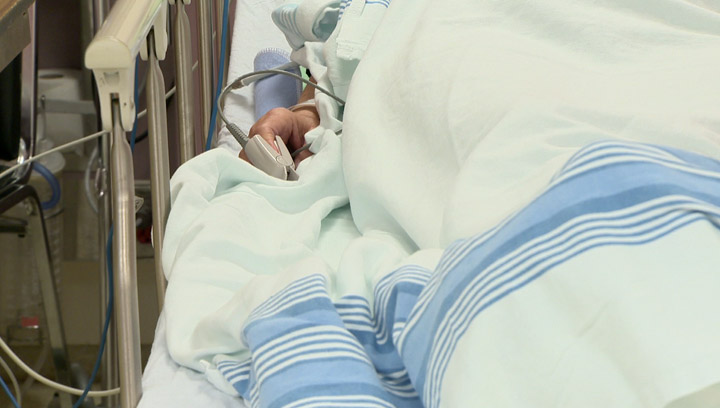TORONTO — They are a brother and sister, 13 and eight years old. Because of a congenital disorder, they’re severely disabled — they have developmental delays, problems with vision, hearing loss, fragile bones and seizures. Multiple organs, including their kidneys and liver, face complications.

Yet the rare disease that’s caused their sickness hands them a remarkable immunity to fight off viruses as deadly as HIV and influenza. Simply put, their sick bodies can’t produce the glycoproteins viruses need as protective shells.
U.S. researchers hope that the siblings hold the key to unlocking new ways to fight viruses.
“It was a paradoxical finding. They had no defence, but had no infections at all. It was challenging, and that’s why we studied them,” Dr. Sergio Rosenzweig told Global News. Rosenzweig said the patients didn’t have antibodies, which are critical players in our immune system.
“But the big thing is these patients taught us a lot. This is the beauty of studying patients with rare conditions. It’s not just helping them, we’re learning from them too and whatever we learn can be extrapolated and used for the benefit of the general population,” he said.
The NIH National Institute of Allergy and Infectious Diseases, through its Primary immunodeficiency Clinic, studies patients with rare immunologic conditions that they’re born with.
READ MORE: Canadian doctors launch rare disease database
- Naloxone-resistant street drug linked to 9 deaths in Eastern Canada seized in Alberta
- ‘She gets to be 10’: Ontario child’s heart donated to girl the same age
- Buzz kill? Gen Z less interested in coffee than older Canadians, survey shows
- Bird flu risk to humans an ‘enormous concern,’ WHO says. Here’s what to know
He came across the siblings, from the United States, about two years ago when they were just six and 11 years old.
Their primary care doctors couldn’t figure out what was making them sick — they were referred to the NIH’s Undiagnosed Disease Program where dozens of specialists in separate fields collaborate to uncover rare diseases.
Ultimately, geneticists provided them with their diagnosis — a congenital disorder of glycosylation. Their disease is so rare that as far as Rosenzweig knows there is only one other person in North America with the disease.
Rosenzweig said that the siblings were immunized with the chicken pox and MMR — measles, mumps, rubella — both live virus vaccines on schedule as infants. But their bodies weren’t able to mount a normal immune response.
READ MORE: 6 Canadian game-changing ideas for global health care
(When children are injected with vaccine, millions of virus infect the cells, forcing the immune system to kick into action.)
The duo’s illness, however, stops them from producing normal glycoproteins that are necessary for their own cells to function adequately. And keep in mind: viruses rely on us, their host machinery, to protect and produce more virus. In these siblings, they needed glycoproteins that their bodies couldn’t make.
Using the blood samples of healthy volunteers, the NIH tested a molecule in test tubes to see if they could replicate the siblings’ inability to complete the glycosylation process and make them handle viruses in the same way the patients do.
Turns out, they could.
READ MORE: Identical triplets receive chemo in fight against rare eye cancer
“They produced less amounts of virus and the virus they produced was significantly less virulent,” Rosenzweig said.
HIV, the seasonal influenza, adenovirus and poliovirus were some of the viruses Rosenzweig and his team tested.
With the last two viruses, the NIH team found no differences in the way the patients’ cells and the healthy individuals cells handled the infections, as neither of these viruses have glycoproteins.
“It’s huge,” he said of his findings.
“It shows there are other pathways that can be explored and used in order to fight infections.”
His complete findings were published in the New England Journal of Medicine.
READ MORE: Little girl thriving at home following Sick Kids heart transplant
carmen.chai@globalnews.ca
Follow @Carmen_Chai




Comments